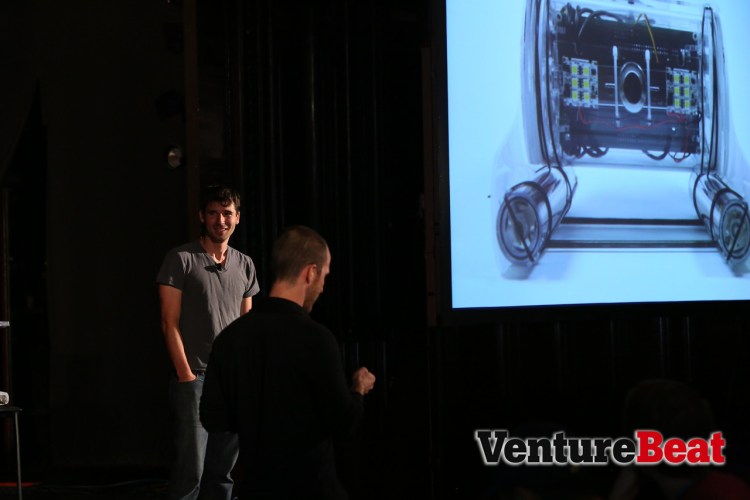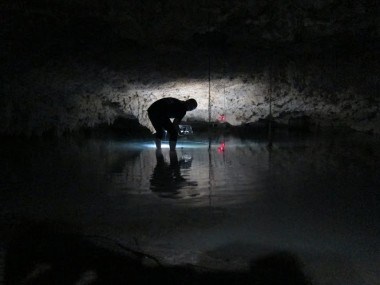SAN FRANCISCO — Hardware hobbyist David Lang is fond of his saying that his goal is a “return on adventure.”
Lang, and his cofounder Eric Stackpole, have lived up to that vision by developing an open source sea robot, called OpenROV. Their tinkering finally paid off when the pair developed a working prototype of a mini submarine out of cheap, store-bought parts. Just over a year ago, the robot caught the eye of the New York Times for having the potential to “change underwater exploration.”
Don’t miss the gallery below to see the Open ROV in action!
On stage at VentureBeat’s DevBeat conference, the Berkeley, Calif.-based founders stressed that the media attention was an unintended consequence, even though it led to a massive surge in demand for the OpenROV. When the team asked the community for funds to manufacture hundreds of robots, the community smashed their expectations in a matter of hours.
Indeed, what began as a Kickstarter project, is now a thriving, revenue-generating company. It’s already one of the strongest successes from the crowdfunding movement, and demonstrates how Indiegogo and Kickstarter are an essential source of funds for hardware projects.
In the past year, the OpenROV robot has traveled into submerged caves in Mexico with National Geographic, swam with melon-headed whales in Palmyra, traveled on board Google chief Eric Schmidt’s yacht, and explored pond life in hundreds of American back gardens.
According to Stackpole, the OpenROV is a gift to the growing community of DIY ocean explorers, as it can travel to a depth of 100 meters. “You’d be hard pressed to find water that deep,” he told me. To appeal to this group of amateur makers, the bot is designed to be customizable — you can add and remove components, like a camera mount or robotic arm.
“It’s all about the clever misuse of off-the-shelf parts,” Stackpole explained.
The OpenROV website offers step by step instructions to build an ROV from scratch in about 6 to 10 hours — it’s a weekend project, and will set you back $849 for the kit.
Considering delving into the maker movement? Lang’s advice for budding hardware hackers is to ignore the hype. At a recent Maker Faire, he noticed hundreds of 3D printer designs, and concluded that the world doesn’t need another one.
Instead, said Lang, “Make really low cost drones, or a new laser cutting machine — anything but a 3D printer.”
Fresh from raising $1.3 million in venture capital from True Ventures, the founders say they plan to grow the team, and want to participate in projects that will open people’s eyes to the environmental impact when we pollute our oceans. They wouldn’t consider themselves environmental activists, but are already collaborating with a variety of nonprofits and foundations, like Eric Schmidt’s Schmidt Ocean Institute.
“I love the idea of people caring more about the natural world,” said Lang. “But we have to begin somewhere, and awakening your sense of childhood curiosity is a good place to start.”
Related Articles
VentureBeat's mission is to be a digital town square for technical decision-makers to gain knowledge about transformative enterprise technology and transact. Learn More















